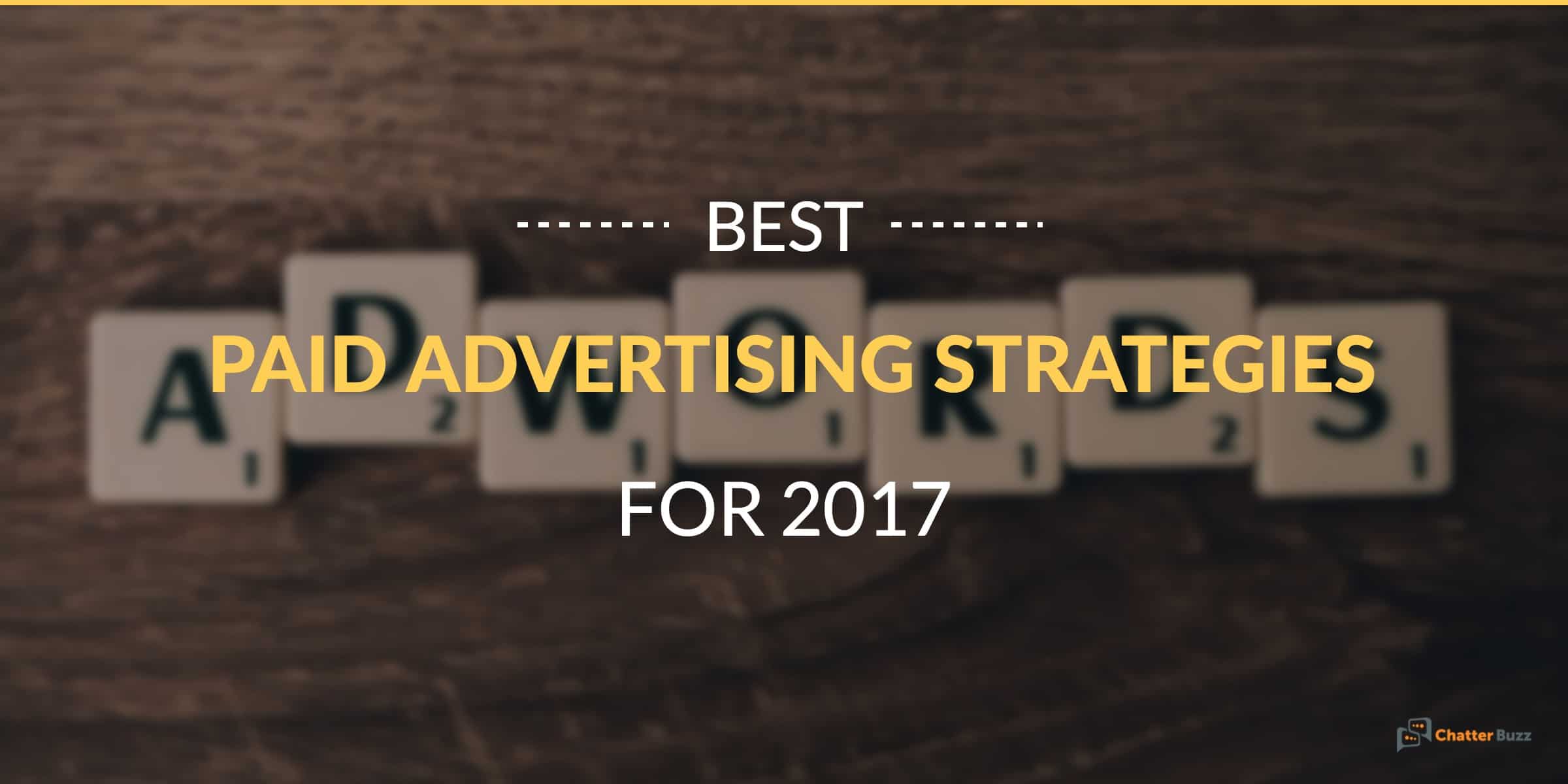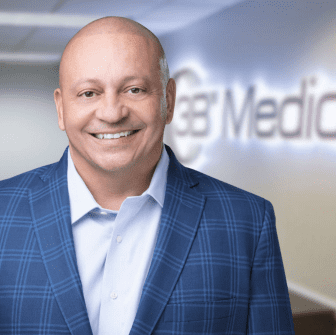How to Make Your Paid Advertising Immediately Successful in 2017 and Beyond

I’m sure you know paid advertising can be an incredibly powerful way to grow your business. It delivers quick results such as leads and sales.
But with the paid search industry skyrocketing to $35 billion in revenue for 2016, it’s clear that most marketers – including your competitors – are hip to the trend.
And so, in order to see great results and get the most value from your budget, you need to get creative in your approach.
Luckily for you, that’s exactly what I’m going to help you in this post.
I’ll show you four of the best paid search advertising trends to hop on for the rest of 2017 if you want to get the biggest bang for your buck.
But before I do, let’s tackle something I’m sure you’re wondering about…
Why Bother with Paid Advertising Strategies If It’s Oversaturated?
And I’ll admit, It’s a fair question.
But the truth is, despite the huge growth in popularity over the last few years, paid advertising remains a “must do” if you want to drive serious traffic to your site.
And there are a few big reasons why:
Achieving High Search Engine Ranking Has Become Harder than Ever
Don’t get me wrong, SEO is still very much worth your time.
But I’m sure you’ll agree that it’s a long game – you’re not likely to see any overnight success from any SEO strategy alone. It takes about 6-12 months and at times 24 months.
And with the strategy to rank higher in Google SERPs changing by the day, investing in an SEO strategy alone isn’t likely to yield the results you’re looking for.
That’s where paid advertising continues to add value: it ensures your target audience actually sees your ad in the places you want them to see it.
And this is particularly true for mobile search, which has now surpassed desktop search in more than 10 countries according to Google.

Here’s an example of what a search for “best home builders” looks like on mobile:

Not only does the paid ad take the top spot on the SERP, but thanks to Google’s new expanded text ads (which I’ll discuss more in-depth later in this post), the ad takes up a healthy chunk of your phone screen’s real estate, too.
But of course, paid search isn’t the only means of getting your ads in front of your target audience.
Pop-up and display ads – two of the most popular digital marketing strategies in the early days of the internet – still exist.
But, I’m sure you’ll agree…
We All Know Popups and Display Ads Don’t Work Like They Used To
Sure, popup ads may have been more effective in the past, but now over 600 million devices around the world use ad block software and 65 percent of site visitors block websites with too many ads.
But, I digress.
And it’s not that display ads have anywhere near the same level of annoyance as pop-ups. It’s just that they really aren’t all that effective for lead generation but for BRAND AWARENESS, it still fits. Click-through-rates (CTRs) have dropped to historic lows while paid search continues to rise.
So, while there’s certainly other strategies beyond paid search to get your ads in front of the right people, this seems to be the most effective.
Social Media is Changing As Well
I’m sure you remember just a few years ago when many marketers believed social media marketing was just a trend.
Of course, they were wrong – today, 90 percent of marketing executives leverage social media to engage with their target audience.
As Sonny Ganguly writes over at MarketingLand:
“Social media advertising helps businesses find new potential clients by using users’ own shared information to identify interest. Rather than reactively targeting users who search a certain term, social media advertising proactively targets relevant users before they even begin their search.”
But, just as Google continues to rework their algorithms in an effort to surface the best possible content for their users, the big social media channels are doing the same.
Feeds on LinkedIn, Facebook, Instagram, and Twitter now all prioritize organic content based likelihood of engagement, rather than in chronological order.
That means, without the help of paid ads, your social posts likely won’t get the exposure they once did on these channels.
Here’s what a sponsored post looks like on Facebook:

And when combined with the ineffectiveness of pop-ups and display ads, as well as the competitiveness of SEO, paid advertising becomes one of the only ways to build brand awareness with your target audience.
So What Strategies Yield the Highest Return on Investment?
1. Personalized Targeting
Look, the data doesn’t lie: companies that use personalization techniques see a 19 percent uptick in sales on average.
So, if you’re on the fence about whether to invest in more personalized targeting – now’s the time to get started.
Why?
Because 91 percent of marketers leveraging personalization in paid search say that it has an impact on their conversion rates.
So, if you’re wondering how exactly to incorporate personalization into paid search, try these strategies:
- Personalized landing pages.
Create unique landing pages targeted toward the audience you’d expect to click your link based on the keywords you targeted.
For example, the search I ran earlier for “best home builders.” When I click the top paid search link, here’s what I see:

The link doesn’t just drive me toward the houzz.com homepage – it recognizes I am specifically interested in the best home builders and immediately launches me into a brief questionnaire to get more information.
- Location-based personalization.
According to a report from Evergage, this is the most common way marketers are personalizing paid search today:

Location-based personalization allows you to make special offers and develop specific calls-to-action based on where the search comes from.
- Custom audiences.
Much like on Facebook, Google now allows you the opportunity through “Customer Matches” to upload target customer information (like email addresses or ISPs) and create ads tailored toward those specific segments.
2. Expanded Text Ads
Google began testing a new, expanded text ad format in the Summer of 2016 and it has since become a necessary piece of any successful paid search strategy.
Why?
Because the ads are twice the size of previous Google text ads and made to appeal to the ever-growing mobile audience and increase your CTR, particularly on non-brand ads:

Here’s what they look like (courtesy of Wordstream):

3. Facebook Carousel Ads
With 2 billion monthly active users, it’s clear Facebook should be a go-to source for paid advertising strategies.
And the carousel ads are one of the best formats on the site.

Digiday reports carousel ads perform ten times better than standard display ads.
As Ana Gotter writes on the Snappa blog, there’s good reason why:
“Carousel Ads have the massive benefit of impressive results, but they can also boast versatility; there are a ton of different ways to use these ads to reach the goal and objective you’re looking for.”
She goes on to share that you can use carousel ads to share multiple products, give tutorials, or tell a quick story about your brand.
And with some businesses seeing as much as a 72 percent increase to CTR on carousel ads versus static image ads, it’s clear these are a great replacement for the budget you previously spent on standard display ads.
4. Competitive Keyword Targeting
Most marketers don’t realize that one of the best ways to think about keyword targeting is in relation to your competitors.
Sure, you might have a tough time with a small budget ranking for broad keyword searches, but when you focus in on terms your target audience might search for in relation to your competitors (like their company name + “reviews” or “ratings”), it may surprise you how close you can get to the top of Google’s SERPs.
Here’s an example for a search I ran for Close.io, a CRM:

Notice how their competitor has top rank on this search because they’ve invested in their Close’s keywords.
SearchEngineWatch.com offers up a few creative ideas on how to use competitor keywords to your advantage (I’m a particular fan of the “competitor name” + “cancel” combination).
But Just Don’t Forget…
Content is king.
Without great content to back-up these PPC strategies, results will always be fairly minimal.
If you focus on developing quality content that speaks to your audience in addition to these strategies, you’ll watch your paid search budget go even further.
Do you need someone to help you achieve your growth goals - then let us help you crush them? Let's chat!
Error: Contact form not found.









